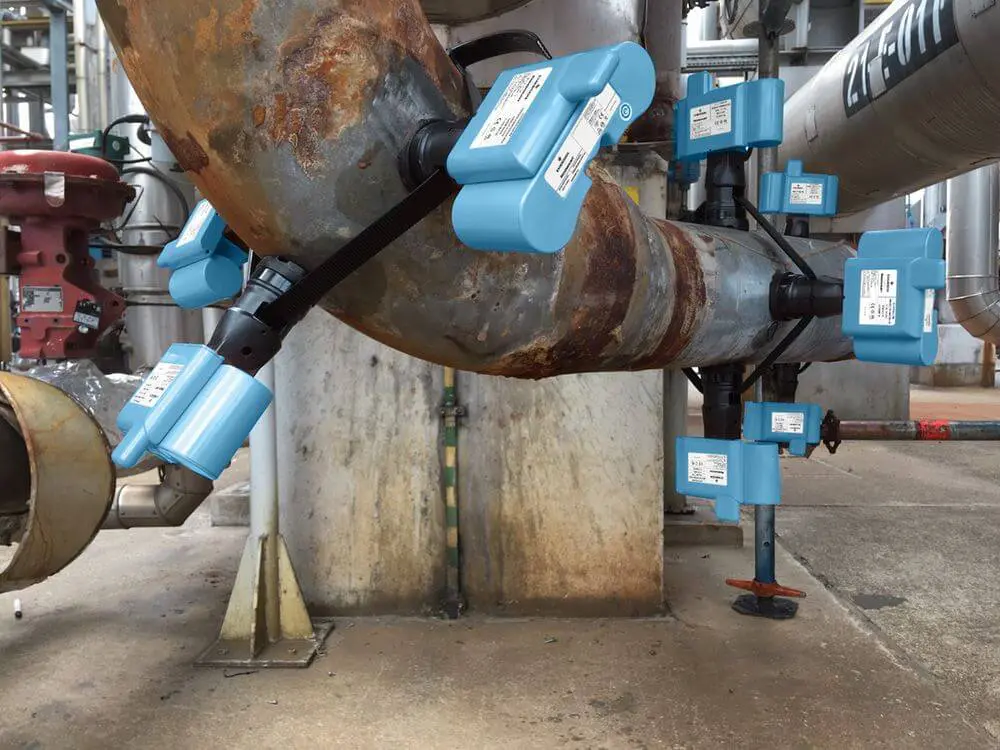Processing crude oil into fuels and other products requires addressing the corrosive contaminants that this crude can contain. Effective corrosion monitoring and management can help avoid potentially catastrophic safety and environmental incidents.
In a Hydrocarbon Engineering article, A Fine Balance, Emerson’s Jake Davies describes ways to address the corrosion and erosion that can wear away piping, tanks, vessels and valves in the refining process.
Jake opens highlighting 3 major challenges. The first is that corrosive contaminants are present and sometimes in greater amounts with lower quality crude oils. Second:
…the equipment in a refinery and even within a single unit typically differs by age, quality, and design. For example, a crude unit was originally conceived and built to process specific amounts of crude oil on a daily basis from a specific range of sources. Piping metallurgy and schedule reflect the expected service life under the anticipated conditions.
Finally, refineries operate today with less people with less experience. Manual monitoring is harder to periodically perform. Jake describes how to address corrosion and erosion from both a capital expenditure (CAPEX) and operational expenditure (OPEX) perspective.
From a CAPEX perspective, refiners can invest:
…in plant or unit upgrades, replacing the most critical piping and equipment with higher-grade alloys and heavier schedules able to withstand corrosive feedstocks and process conditions over a long service life. This is obviously an expensive solution and takes time to implement.
From an OPEX perspective, refiners can attempt:
…to reduce the metal loss caused by corrosive process fluids by adding corrosion inhibitor additives. This can be very effective but presents its own challenges. First, the inhibitor must be matched to the corrosive agent(s) in the crude and the concentration. An ineffective combination does not solve anything and wastes the additive, so the effectiveness must be optimised and reevaluated whenever there is a feedstock source change or other process adjustment.
He highlights several ways to monitor for the impact of corrosion including coupons, electrical resistance (ER), electrochemical and ultrasonic thickness measurement. Coupons:
…using the same material as the piping, can be inserted into the process fluid to mimic the pipe wall. Monitoring metal loss from the coupon manually over time can be extrapolated to the whole system.
ER and electrochemical probes:
…indicate the presence of corrosive agents in the process fluid in real-time. Installing these requires process penetrations, but the data is highly useful since it provides immediate feedback as to the corrosiveness of a new batch of crude, and therefore warns when conditions are conducive to high metal loss.
Non-intrusive Ultrasonic Thickness (UT) sensors:
…mounted in strategic positions to measure metal thickness continuously. UT sensors that use the latest signal processing techniques are capable of repeatability of around 10 μm (0.4 mils), making it possible to detect even very small changes in metal thickness over time. Data can be collected and historised to monitor metal loss for root cause analysis and predictive maintenance.
Read the article for Jake’s perspectives on the best combination of technologies for data collection and analysis, on , and on taking a systemic approach to corrosion monitoring, on data presentation and on value creation opportunities to deliver the necessary ROI for investments in these technologies.
Visit the Rosemount Wireless Corrosion & Erosion Monitoring section on Emerson.com for more on the these technologies and applications for better-informed operational decision making and safer, more sustainable operations.






